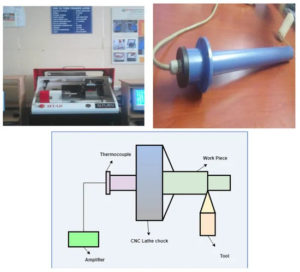Authors
Naol Dessalegn Dejene
Hirpa G. Lemu
Endalkachew Mosisa Gutema
Abstract
Abstract: Thin-walled structures are a significant and growing portion of engineering construction,
with a wide range of applications, including storage vessels, industrial buildings, warehouses, aircraft,
automobiles, bridges, ships, and oil rigs. Thin-walled components with minimum thickness without
compromising strength and other quality characteristics are the desire of modern industry. Reducing
wall thickness not only aids in lowering the cost of production. It also improves the effectiveness of
engineering systems, resulting in lower fuel consumption and lower emissions of hazardous gases to
the environment. Nowadays, even though thin-walled parts are demanded, the constraints of the
production process, quality, and reliability are the concerns of current research and development.
The ability to produce parts with intricate geometries and tight dimensional tolerances are important
criteria for advanced manufacturing processes. In the early days of society, investment casting was
used to produce jewelry, weapons, and statues. In modern industry, investment casting is still used
to produce thin-walled and intricate parts such as turbine blades. The current advancements in SLM,
which has the capacity to produce thin-walled and intricate parts, have recently attracted attention
due to several benefits, such as the supreme degree of design freedom and the viability of tool-free
production directly from CAD data. However, the current technological applications of SLM and
investment casting are crucial for producing parts at the desired quality and reliability. This review
article focuses on comparative studies of SLM and investment casting at the current technology level.
The basis of comparison via systematic approach is mechanical characterization; quality in terms of
porosity, microstructure, surface roughness and dimensional accuracy; and residual stress. Therefore,
the latest open scientific sources published are considered to obtain sufficient literature coverage.
Better tensile strength and fine microstructure are found in SLM, while better surface quality, fatigue
load resistance, ductility, and residual stress are found in investment casting. The research gap for
further investigation is indicated.
Get full article here.



